(...)
We headed onto the village of Akhtala to visit its fortress and the temple complex located in a territory surrounded by deep and rocky canyons.
We accessed to it through the main entrance of the fortress protected by three storey high pyramid-like towers, which built in the 10th century by the Bagratuni dynasty is said to have played an important role in protecting the North western regions and the main road leading to Georgia.


Once we went through it we could see the Holy Virgin's church said to have been built in the 13th century along with other Chalcedonian style constructions straight in front. On our left we could see a rather interesting sculpture depicting two intertwined wedding rings topped by a pomegranate, symbolising continuity in the marriage. Brides and bridegrooms often walk under them expressing their vows and expectations for a long lasting marriage.

The Georgian style could be noted on the church's design as well as in its architectural decorations, we were told, namely the vaulted vestibules to be seen on the eastern side, the relief crosses over the edges, the alcoves bordered with pillars and the decorative motives.


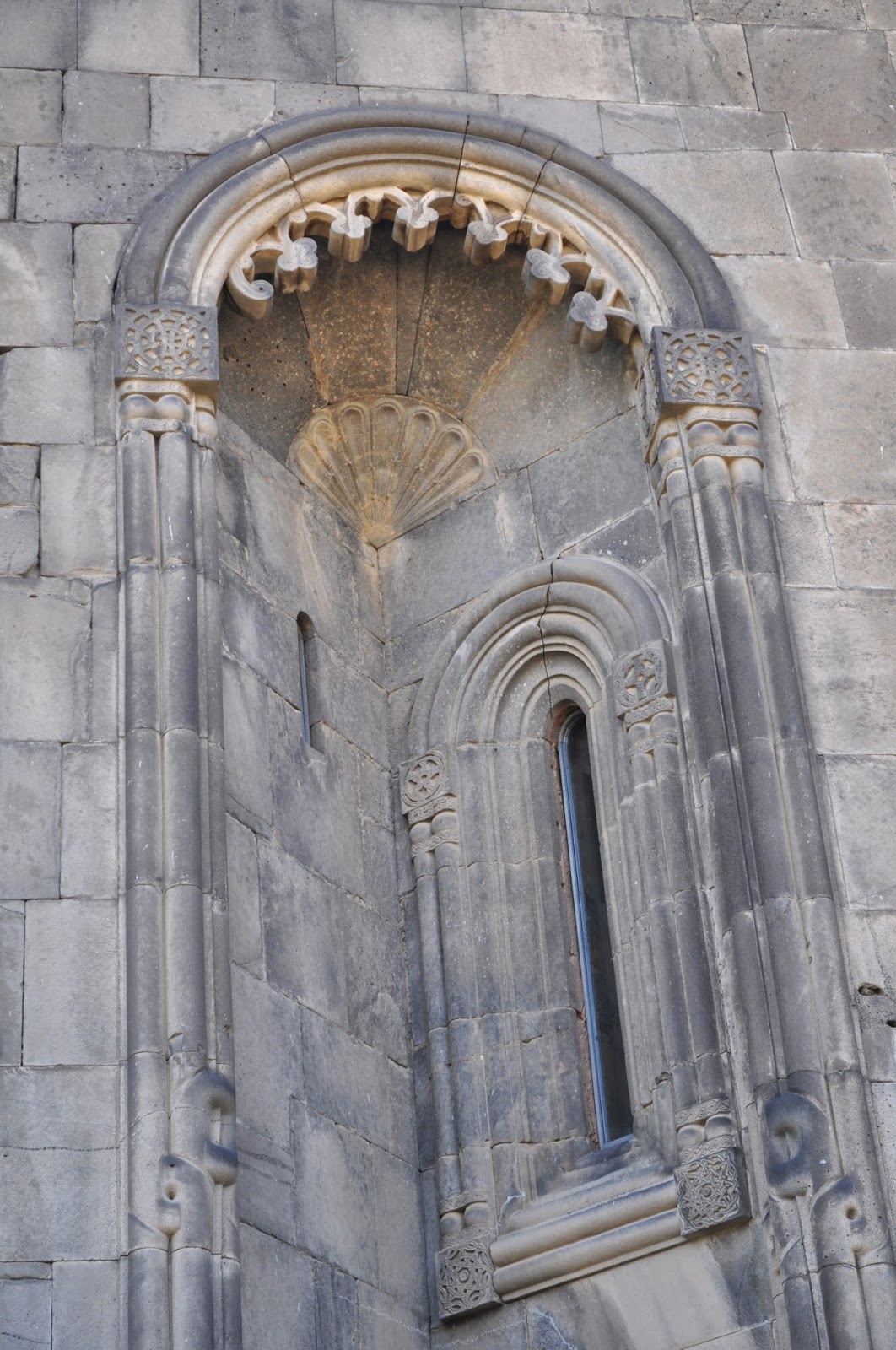

But what mostly impressed me, to say the least, was the Church of the Holy Virgin. I was absolutely mesmerised the moment I walked into it and noticed all of its inside walls were covered in frescoes. Hovanes Karapet's painted iconography was extremely rich and varied in its details embedded in what seemed to be a ruling colour - blue.
The image of the Virgin Mary enthroned in the apse, despite having been defaced by artillary was still imposing. The depiction of the last supper, the ranks of saints, scenes of the last judgement, the trial, crucifixion and resurrection of Jesus was extremely fine. I must confess I was speechless.









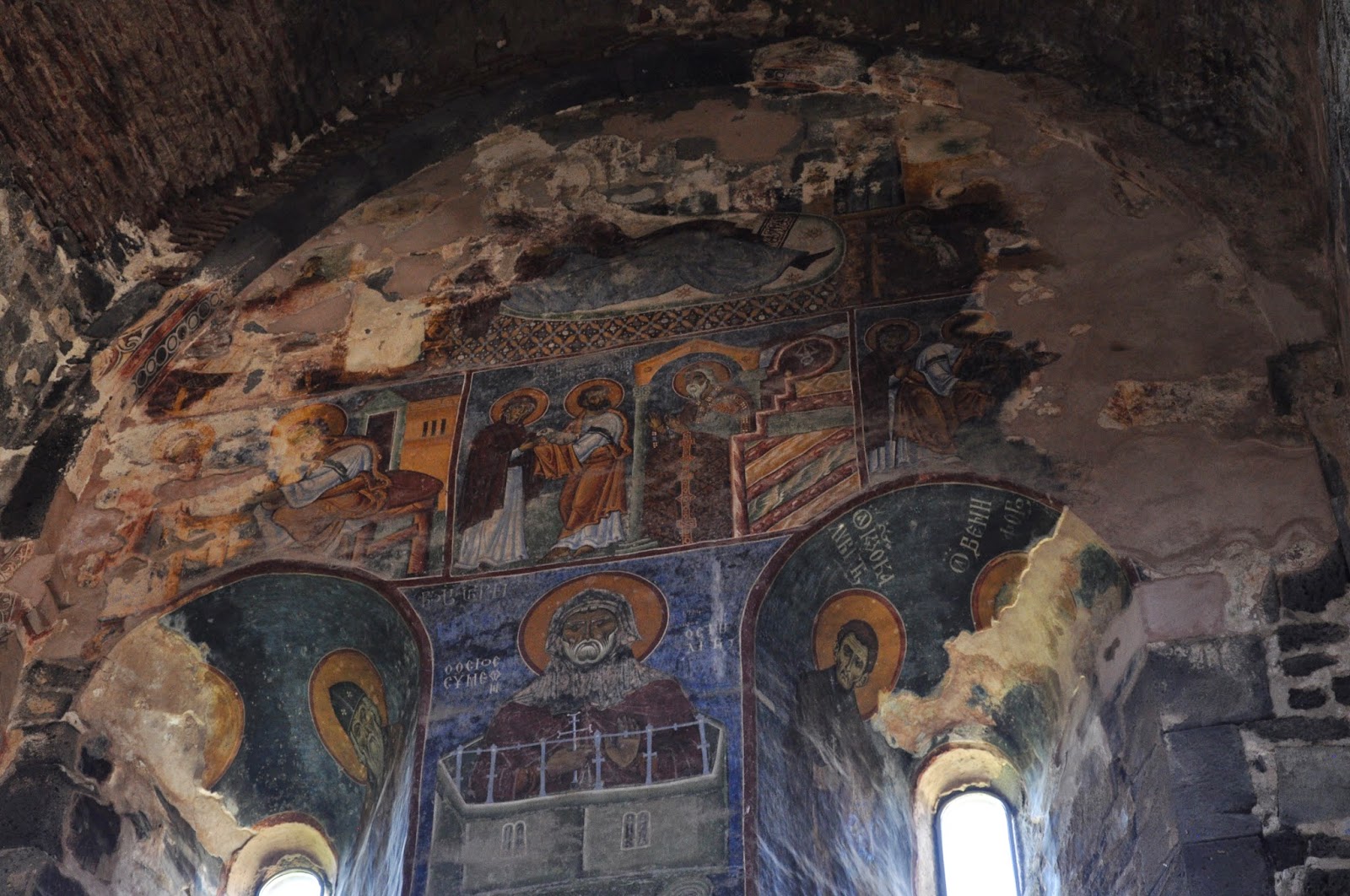

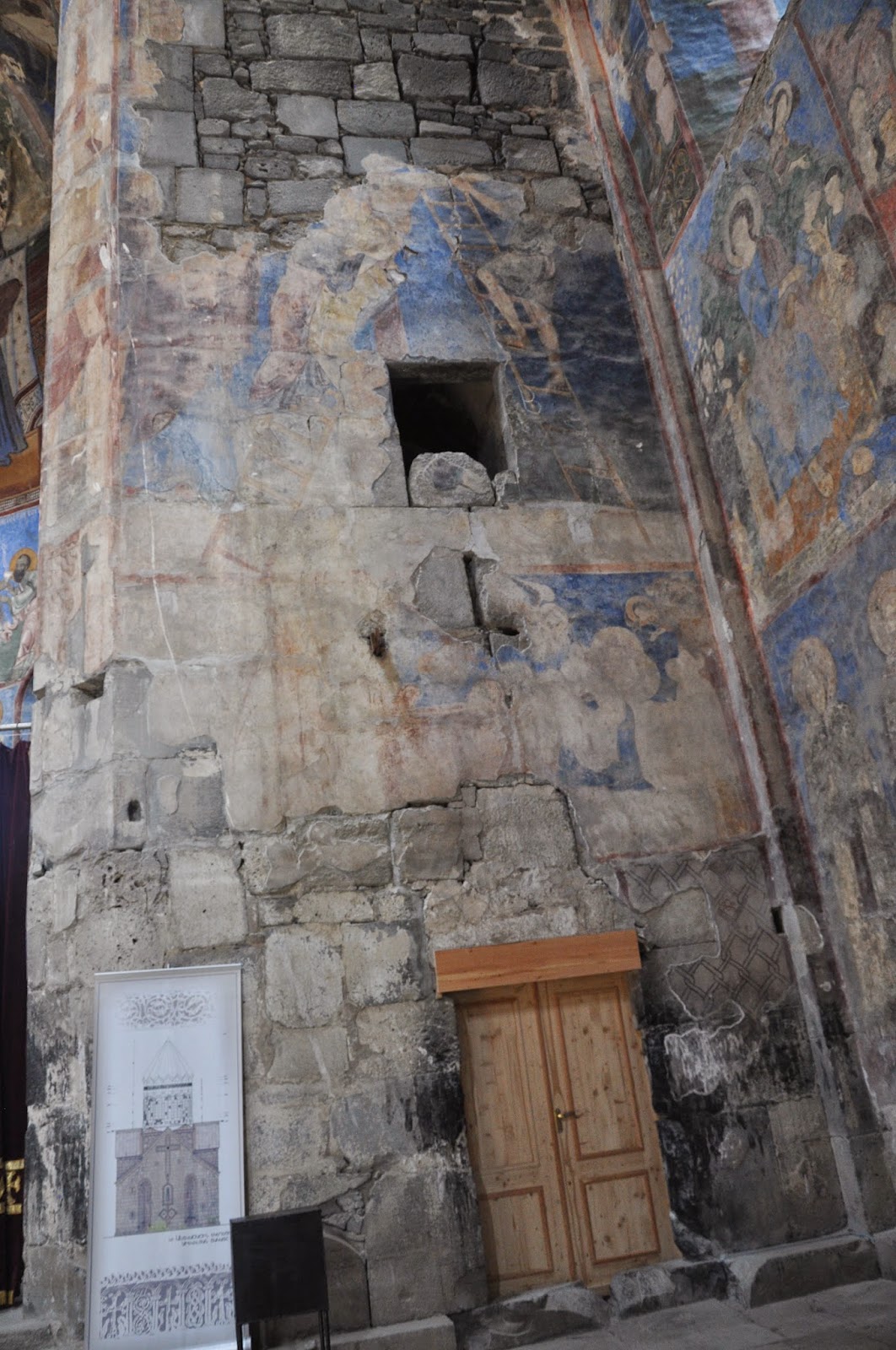







One particular scene did catch my attention though, maybe because I vaguely remembered having read about it in one of the guides - the 40 martyrs of Sebaste, said to have been Roman soldiers martyred under Emperor Lucinius at Sebaste, Lesser Armenia in A.D 320.
According to the description of the events having refused to renounce their Christian faith, they were condemned to die by being exposed naked on a frozen lake with a North wind blowing. A warm bath nearby added to the temptation to renounce the faith. Only one succumbed, said to have succumbed on entering the warm bath. The number of martyrs is said to have remained the same though, for one sentinel impressed with the martyrs resolution became Christian and stripping off his clothes joined the remaining 39.
The feast of the 40 martyrs is still celebrated on the 9th of March every year.
As the visit was finished and we were heading back onto the bus I still looked back as if to retain the image of the site, which I felt to be among my favourite ones until then.











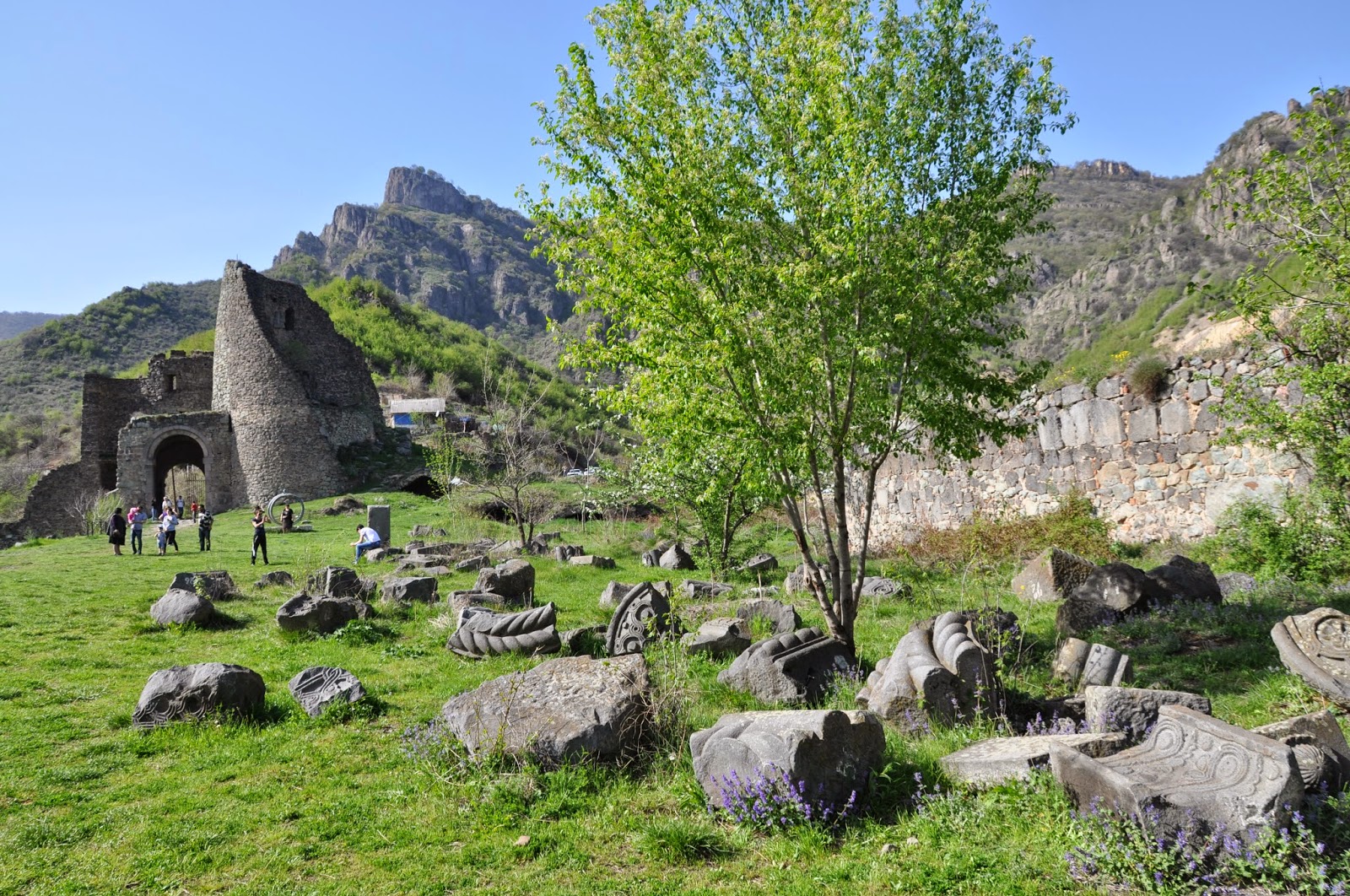


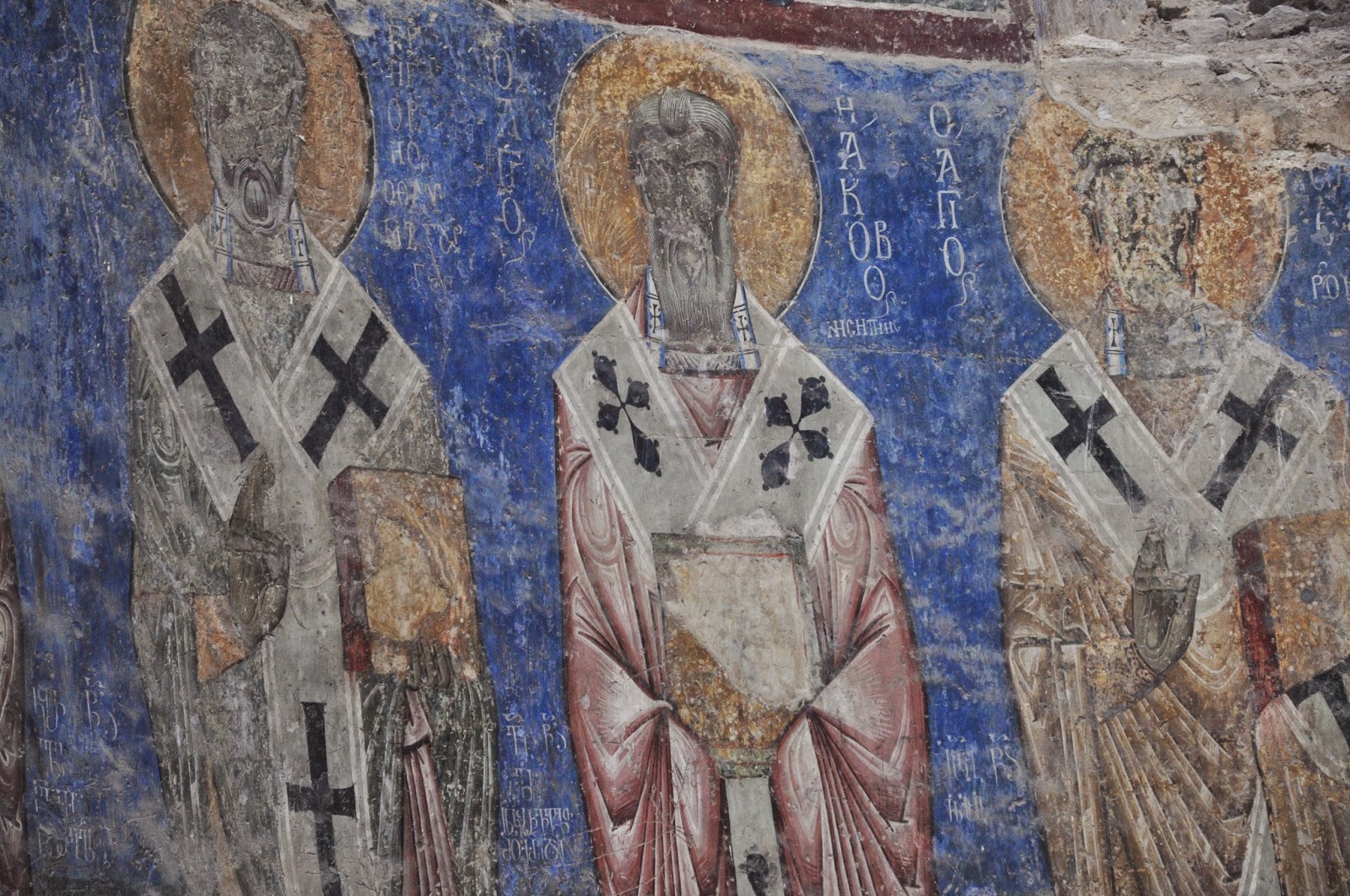

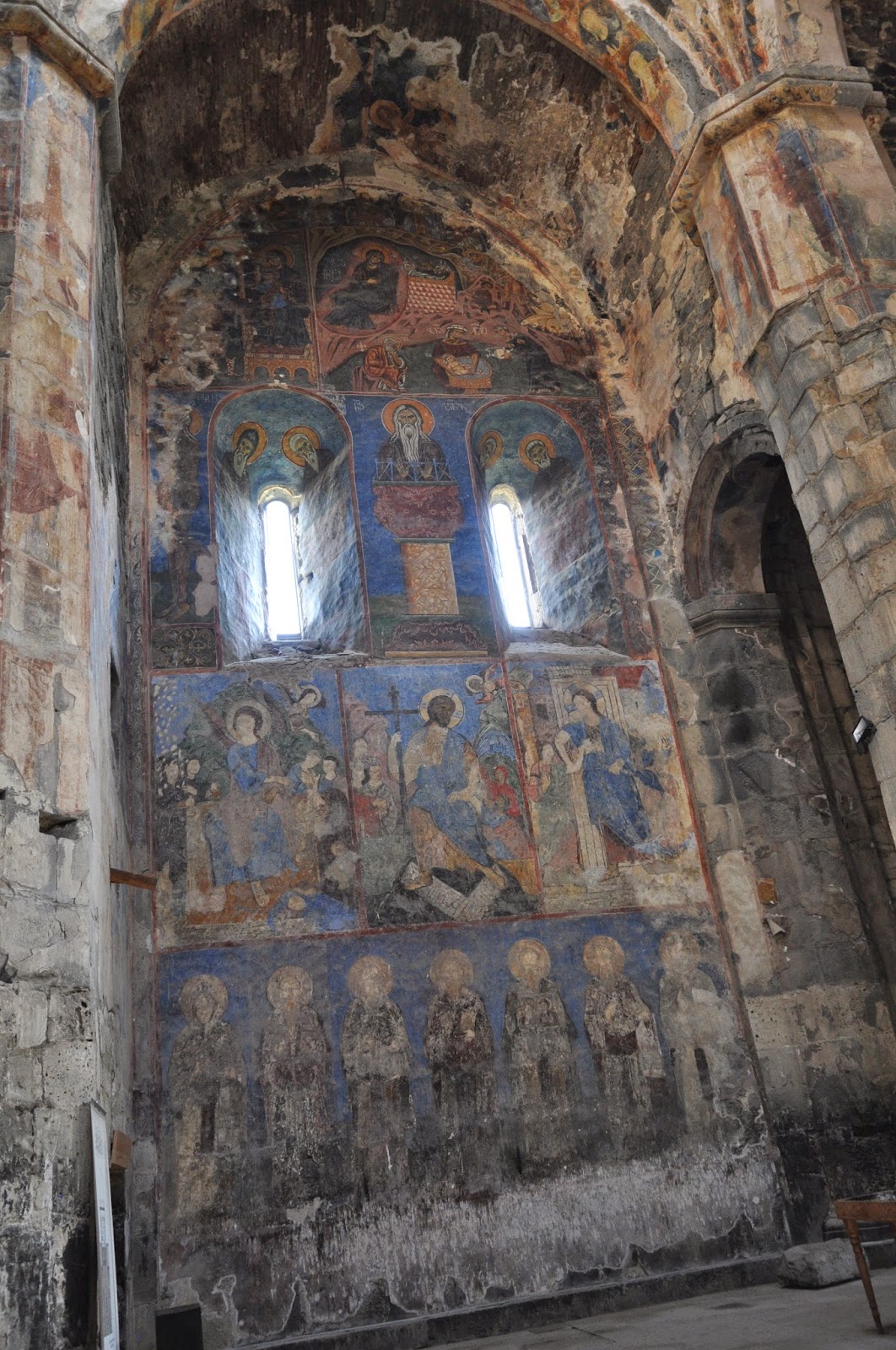














No comments:
Post a Comment